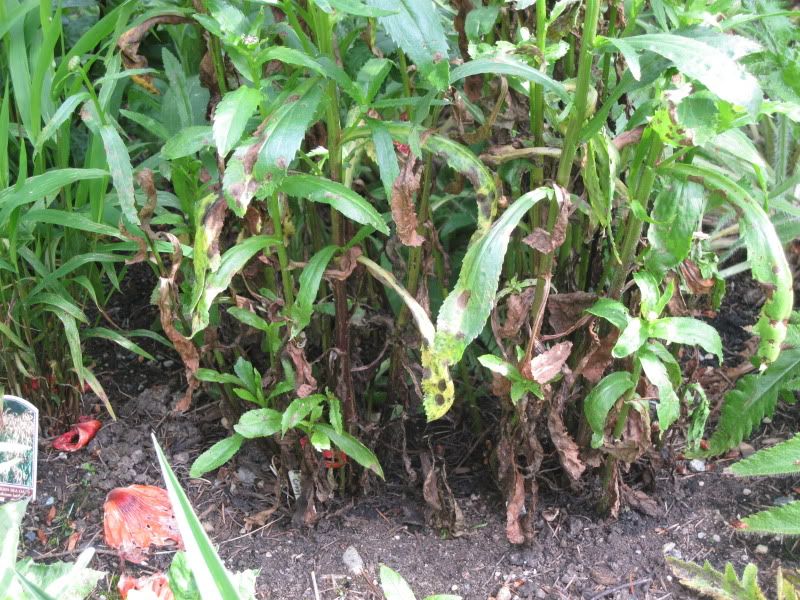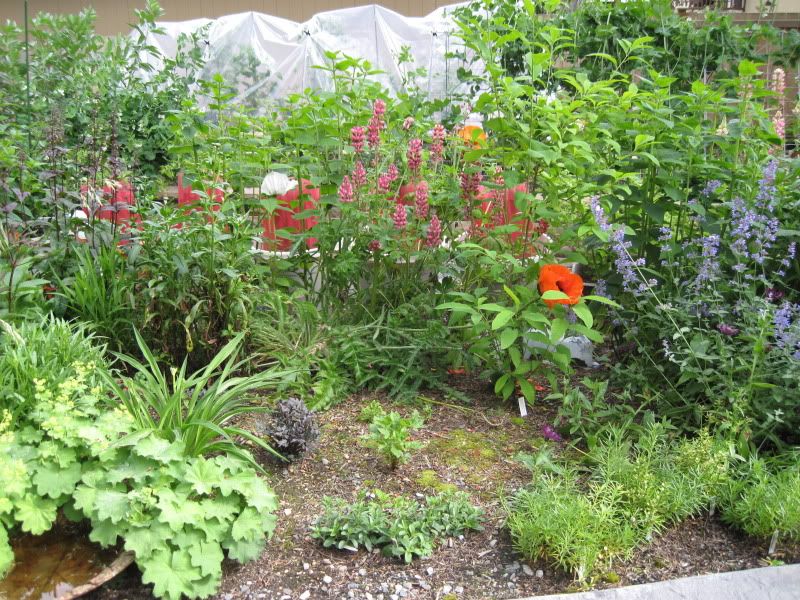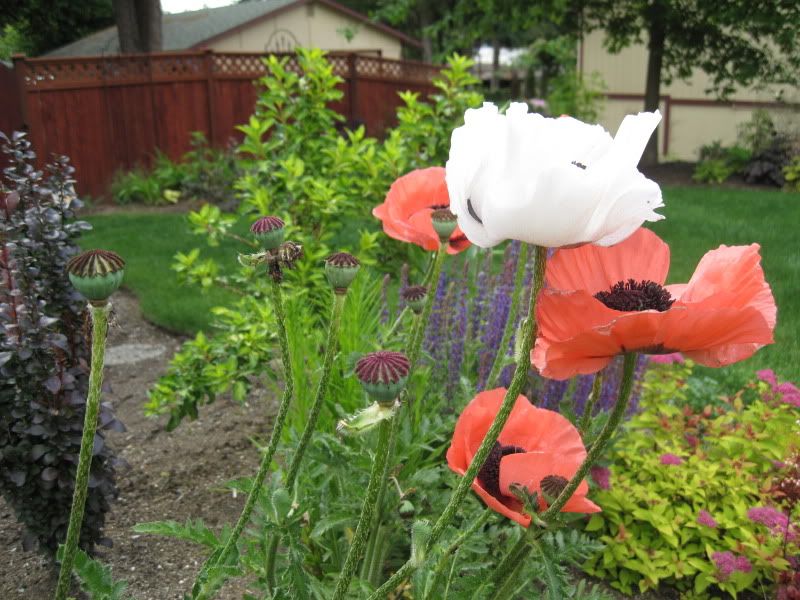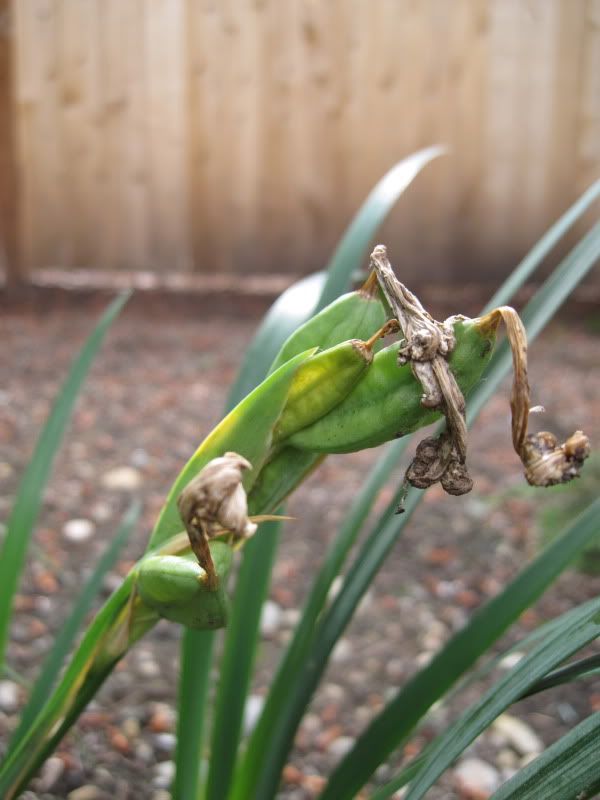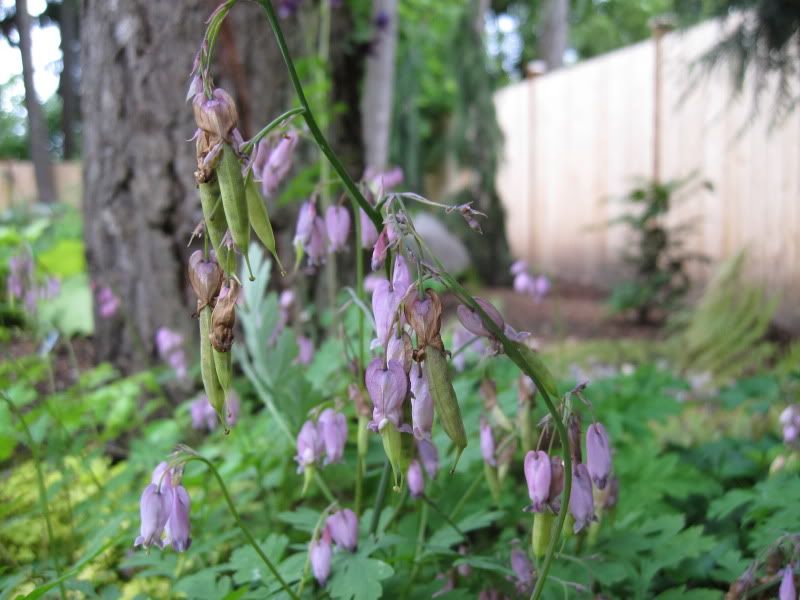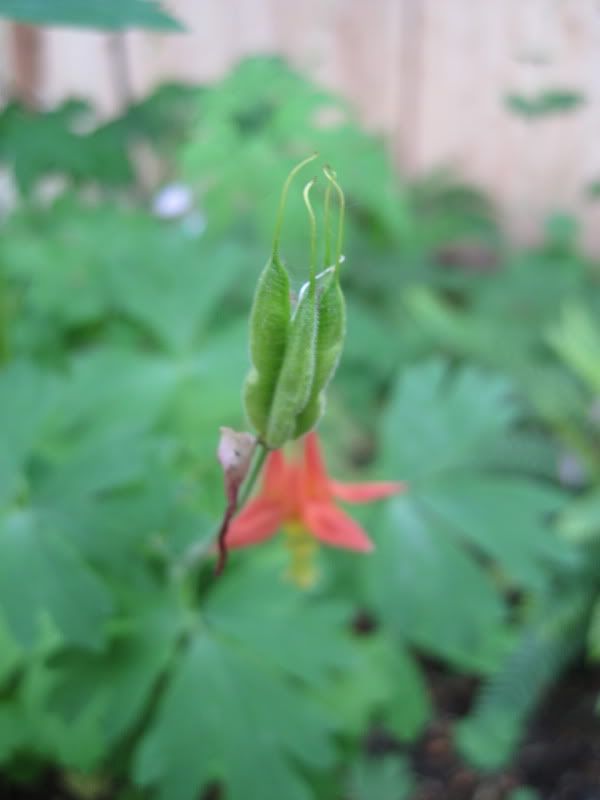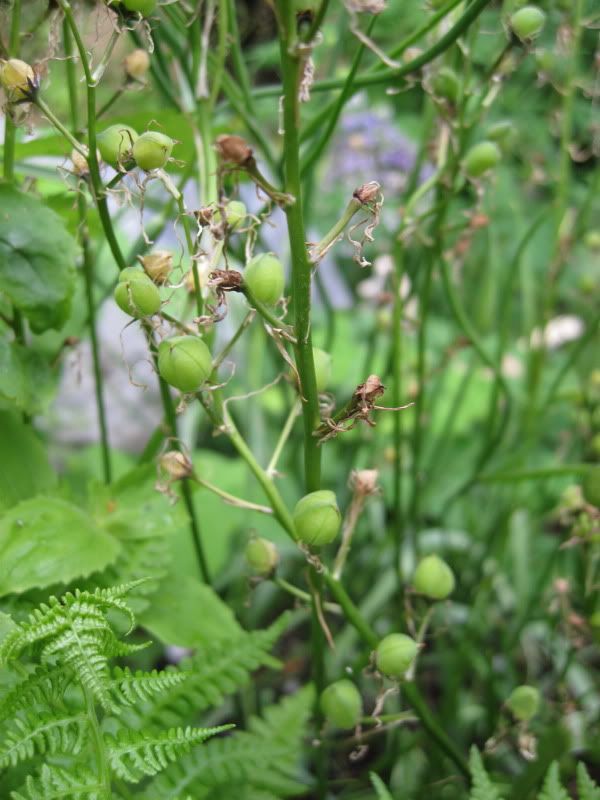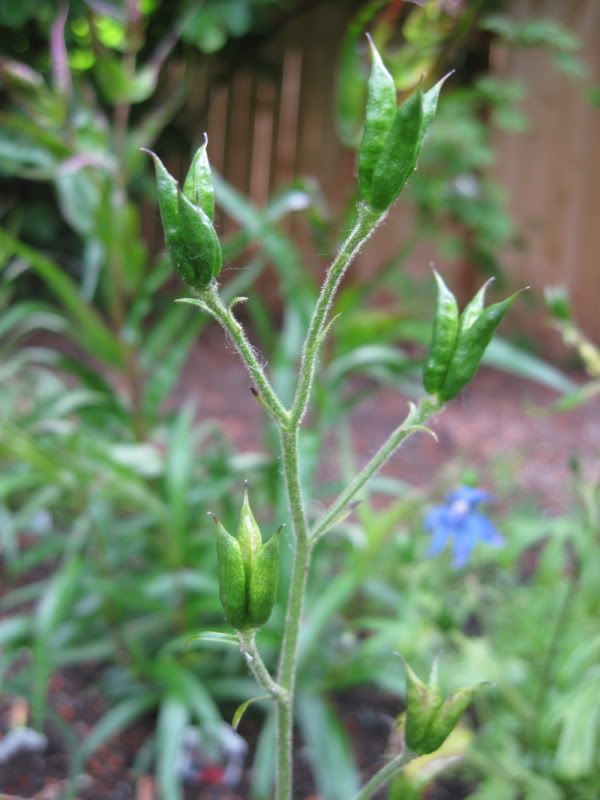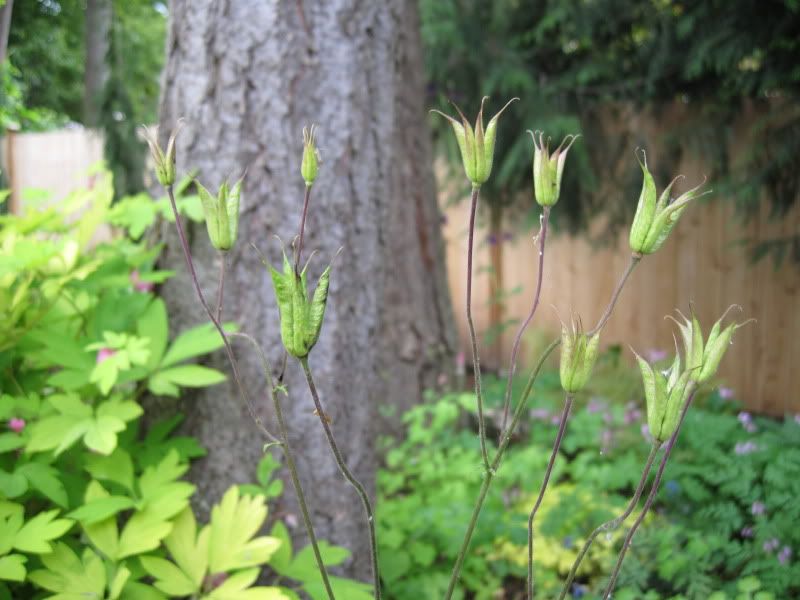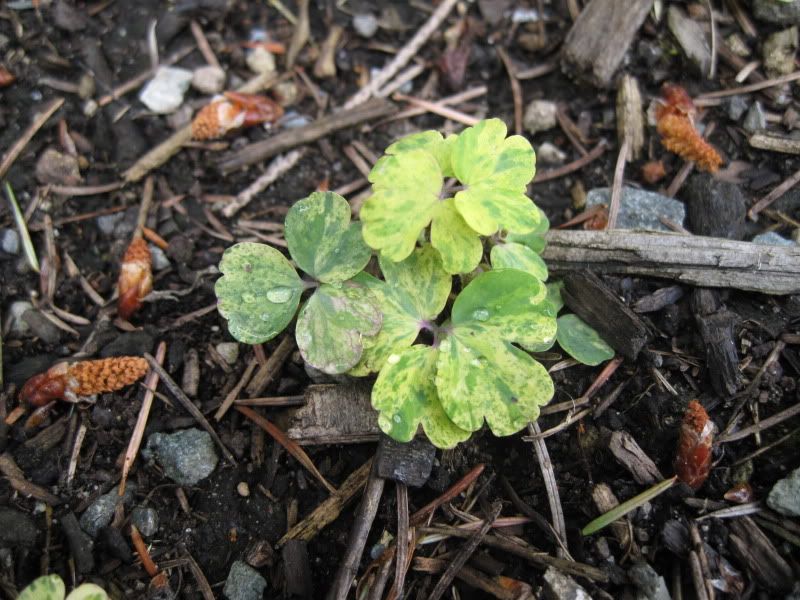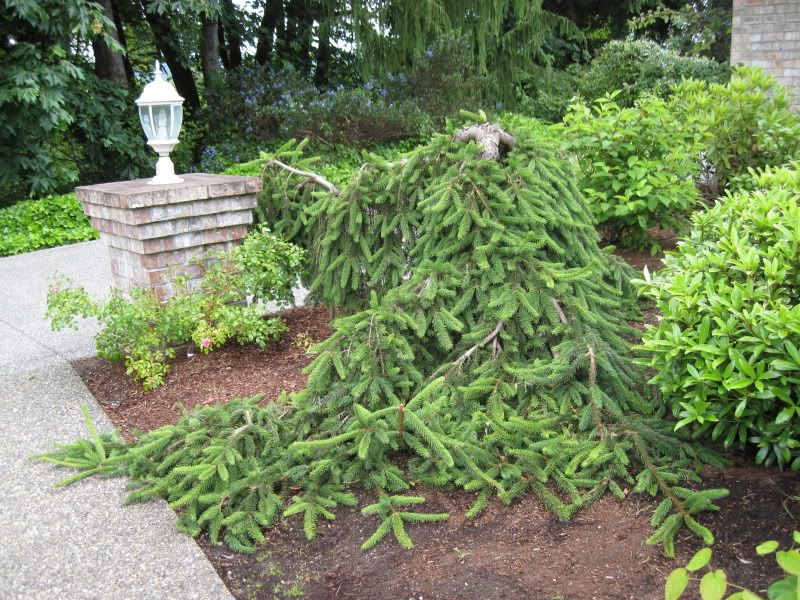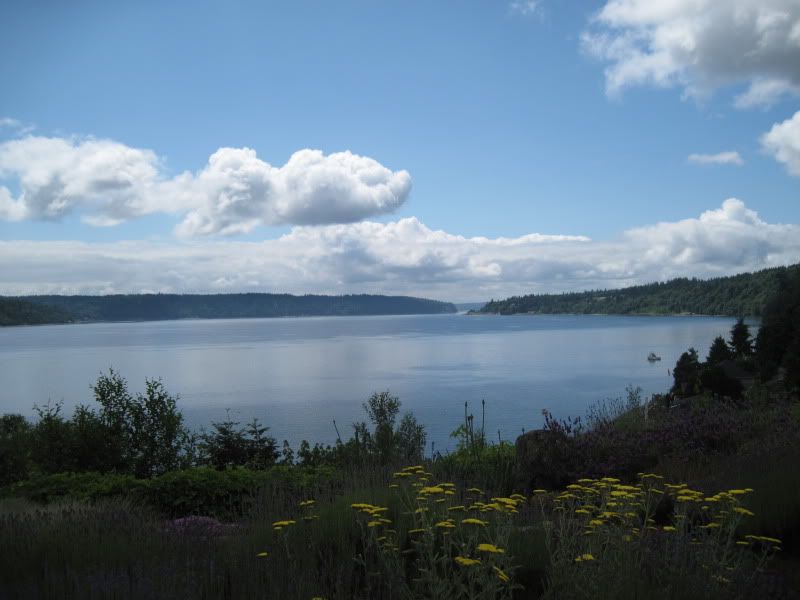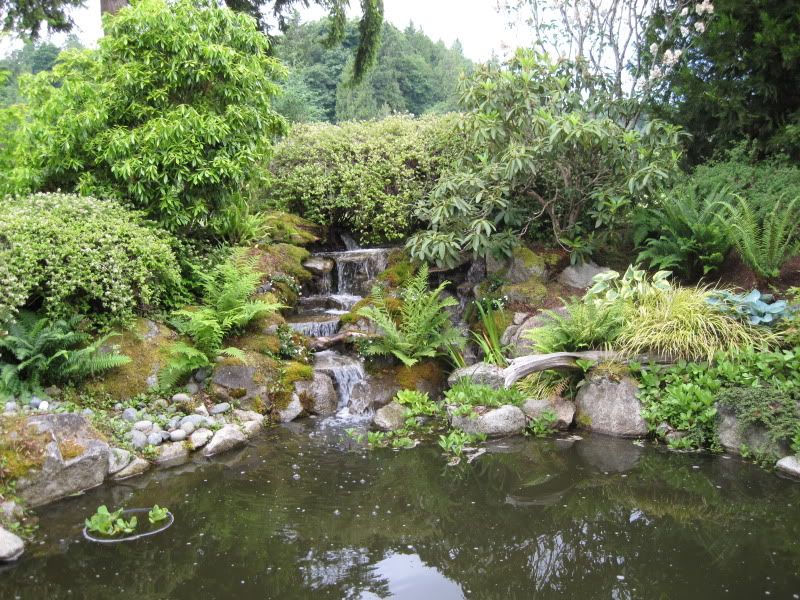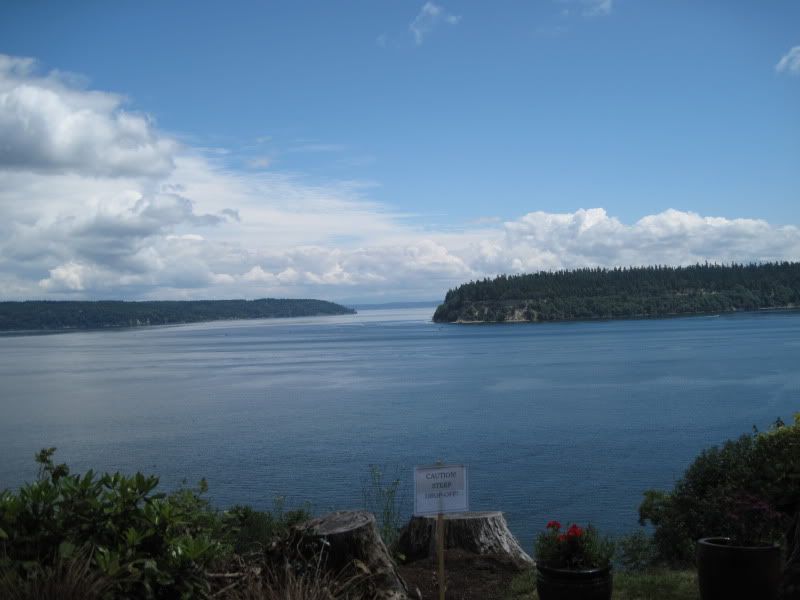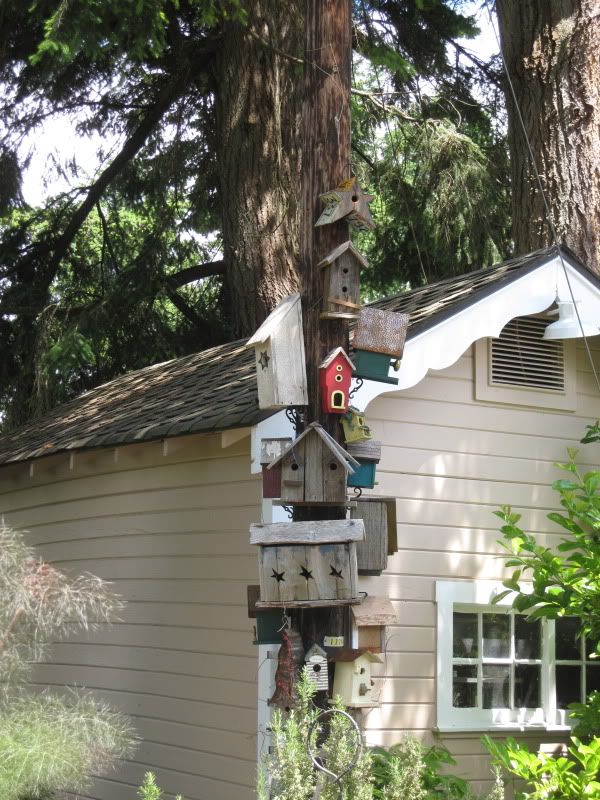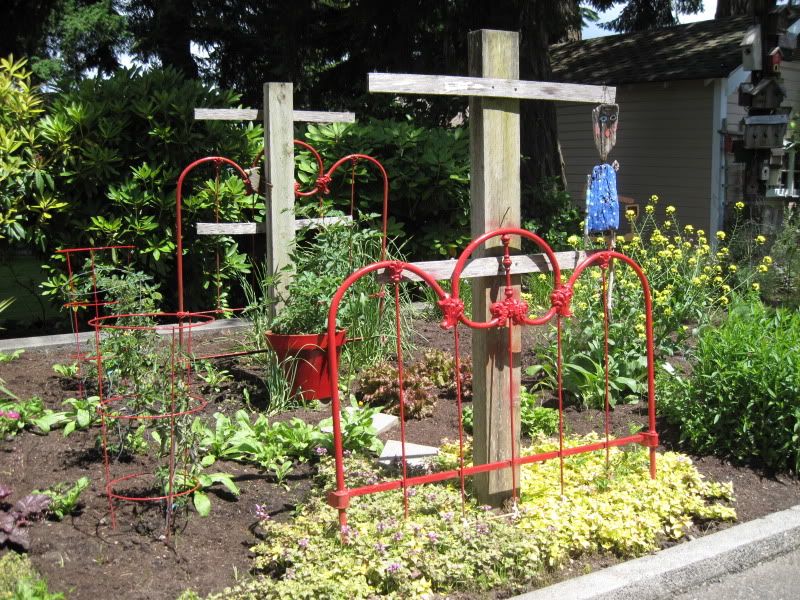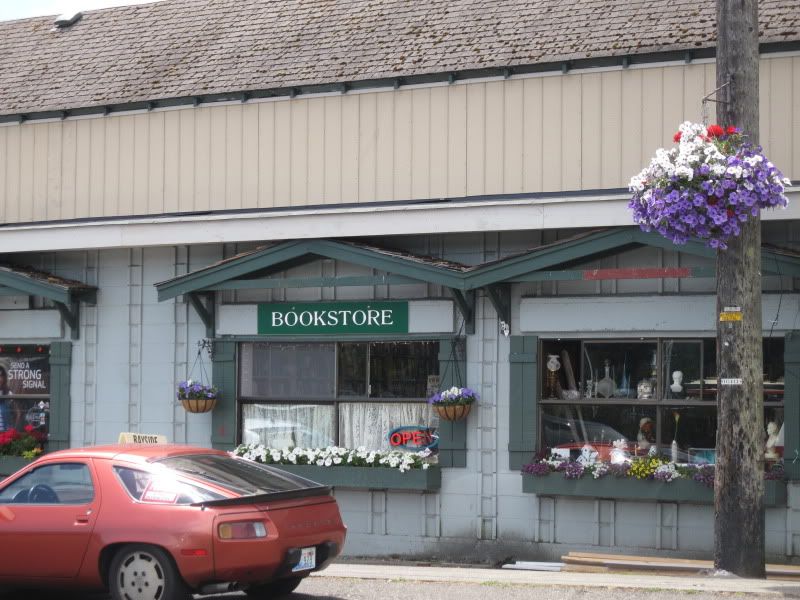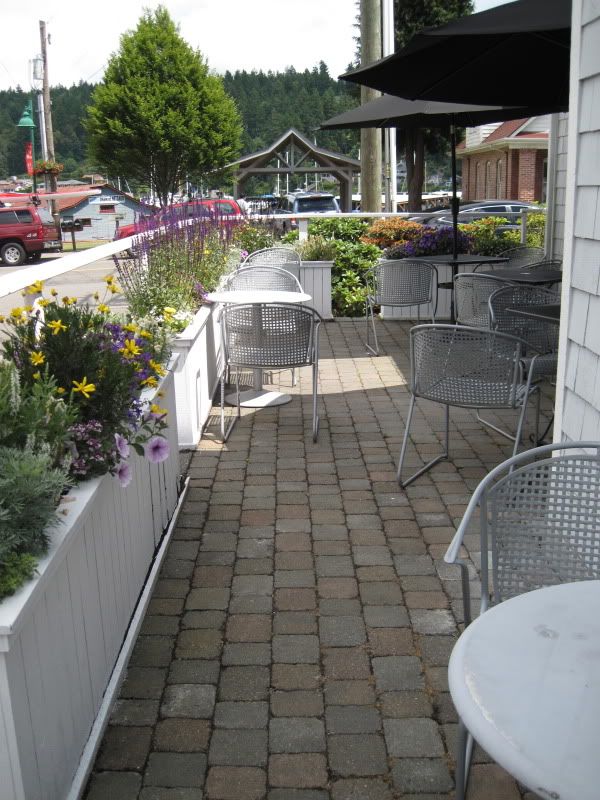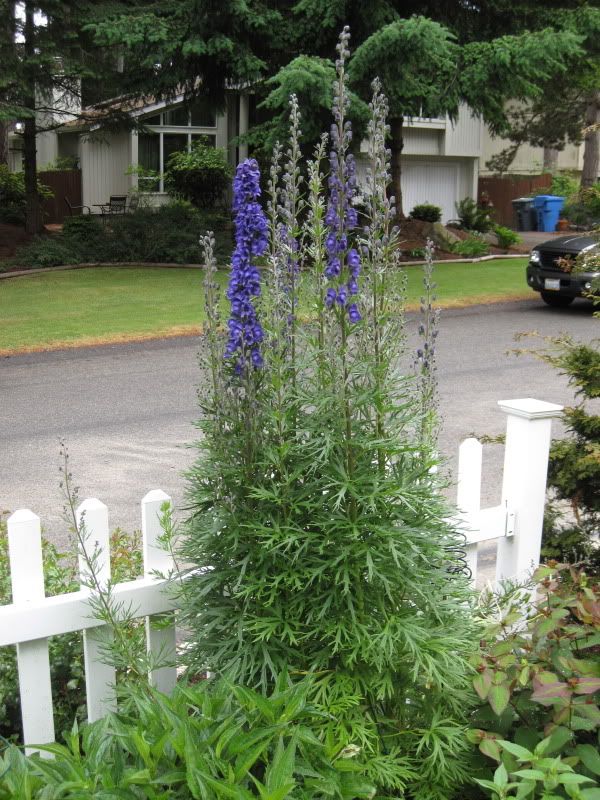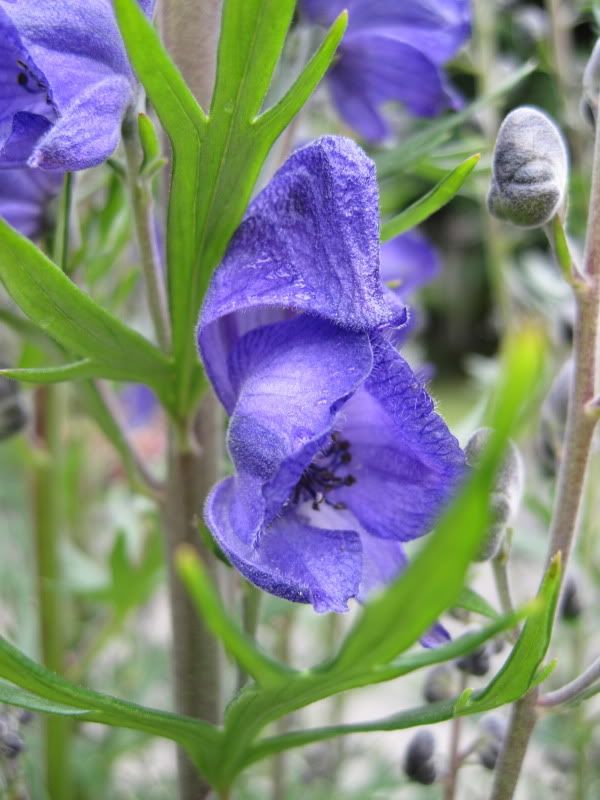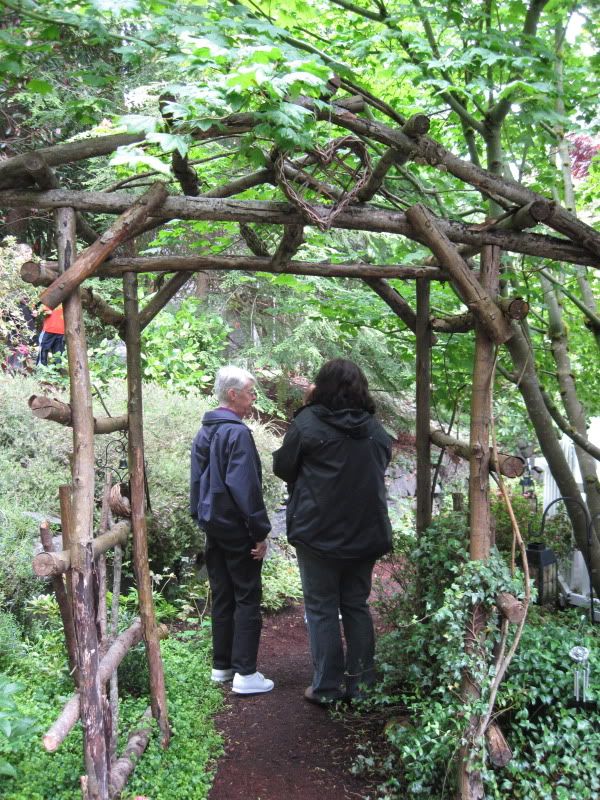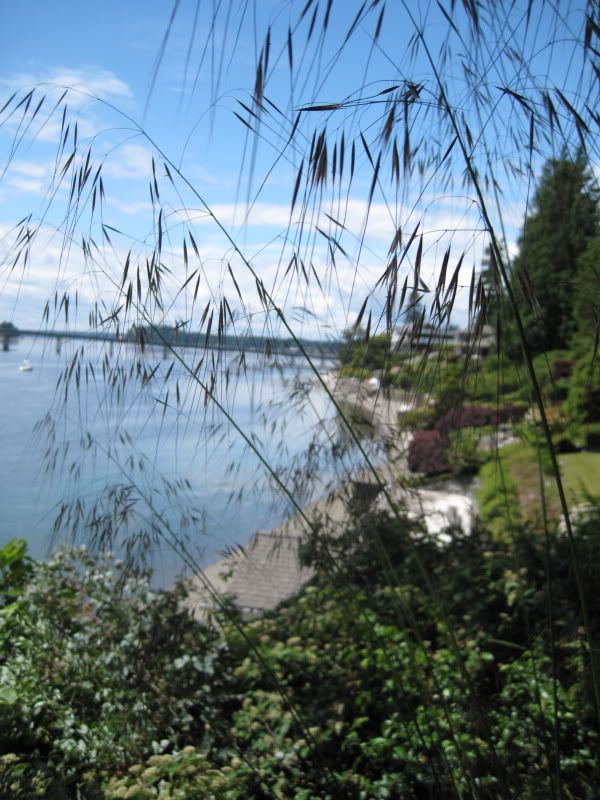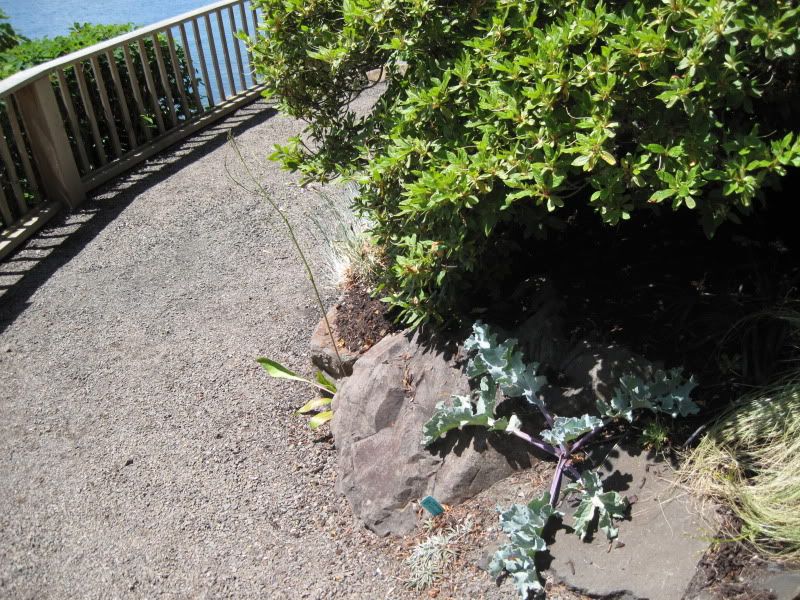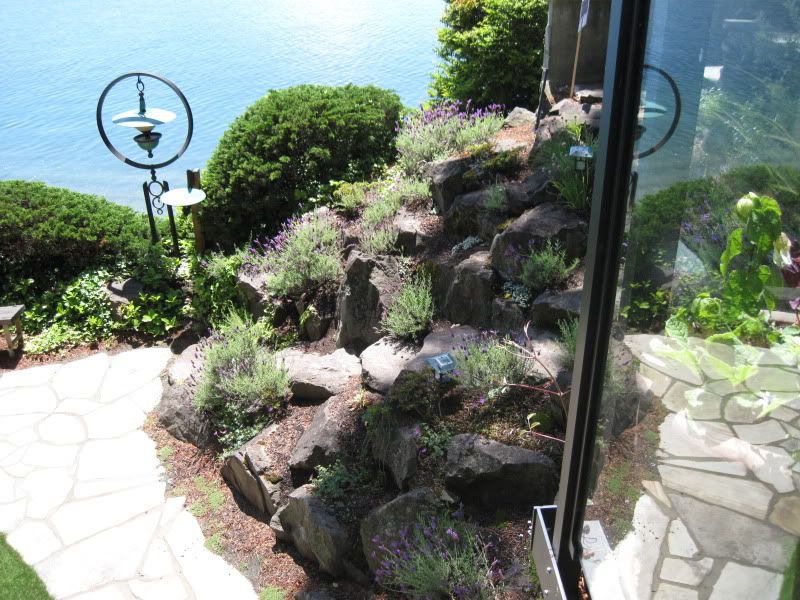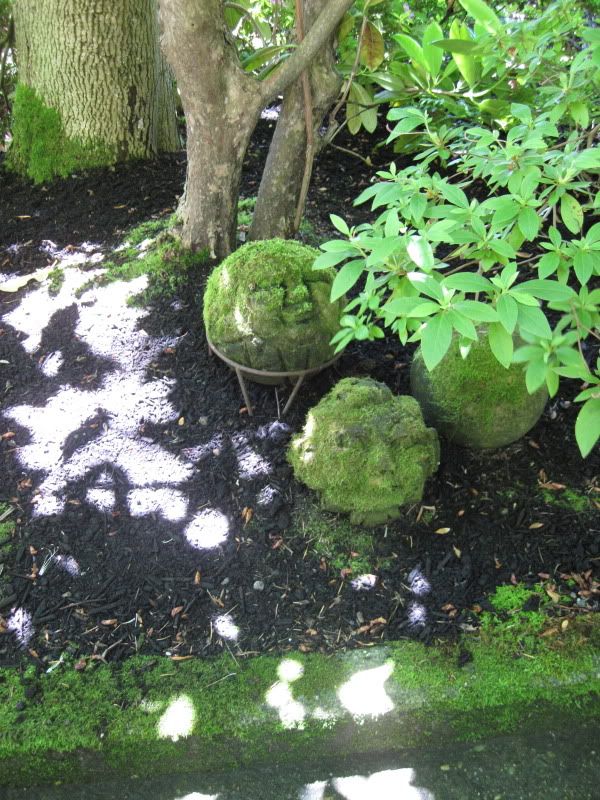Not any more.
The bed facing East
Holy Moly! If this is creeping, what will it look like next year, in its "Leap Year?"
Actually, I already know it will look different. There are things about it that I don't like, now that some of the plants are bigger and flowering. (Always changing, the garden is, said Yoda.)
The Lupines had aphids on them, which I sprayed with Pyrethrin. I wish now that I had gone to the nursery to buy ladybugs. The aphids are gone, but the Pyrethrin left the flowers looking ratty. And I don't know if it was the aphids, or slugs, or earwigs, but the foliage looks ratty too (it already looked ratty before I sprayed).
Ratty Lupine foliage
So I'm thinking, since Lupines are short-lived perennials anyway, that once the seedpods mature, I will pull them out and replace them with tall Joe-Pye weed. Something really dramatic, and structural and tall, so that the back row won't all be one level.
Another problem I have found with this bed -- poppies are floppy.
Floppy Oriental Poppy foliage
More floppy Oriental Poppy foliage
I want to keep them (I've heard that since they have long taproots, they are almost impossible to move anyway). So next year I'll have to figure out a way to support them. A peony ring or something. I had hoped that if I planted enough stuff around them with strong stems, like Monarda, that they would be supported. But I think I need a Plan B.
Another problem with this bed: Shasta daisies have ugly legs.
Gotta hide that somehow.
Here's the entire bed from right to left, in chunks. And some thoughts.
Wow! Nepeta 'Walker's Low is huge. I think this is two plants, planted close together. In all, it stretches about 6 feet wide. There are other plants in here that it totally obscures. Ornamental grasses, a couple of daylilies, etc. When it's done flowering, and I cut it back, those should show up better. But it's a huge clump for just one end of the bed. I need to move some of this to the other end, for balance. Or maybe to another bed entirely. Or out into the street. Or to someone else's garden.
Look at that big bare spot! The two small plants right in the center are Dahlias, and will get bigger before the end of the summer. But it still looks bad. Do I do anything, or do I wait till next year, and see if the bare spot is still there? And there's that ugly shasta daisy foliage again. The plants right in front are Iberis/candytuft on the right, and Veronica in the center. The Iberis is done flowering, but the Veronica hasn't started yet. I bet they will both get bigger next year, but I'm not sure how much bigger.
This far left end of the bed isn't bad, but it still looks like a mish-mash. Nothing is really well-defined, but is that just because so little is flowering yet, except the Lupine? The tomatoes with their wall-of waters and the hoophouse don't help the view much either. I've toyed with the idea of putting a trellis here. Or maybe if I plant Joe-Pye, it will obscure the stuff behind, in the raised beds.
Actually, this detail at this end of the bed isn't bad.
With some judicious tweaking, I think I can improve this bed. I'll be keeping an eye on it in July, when many of the flowers here should start blooming.






